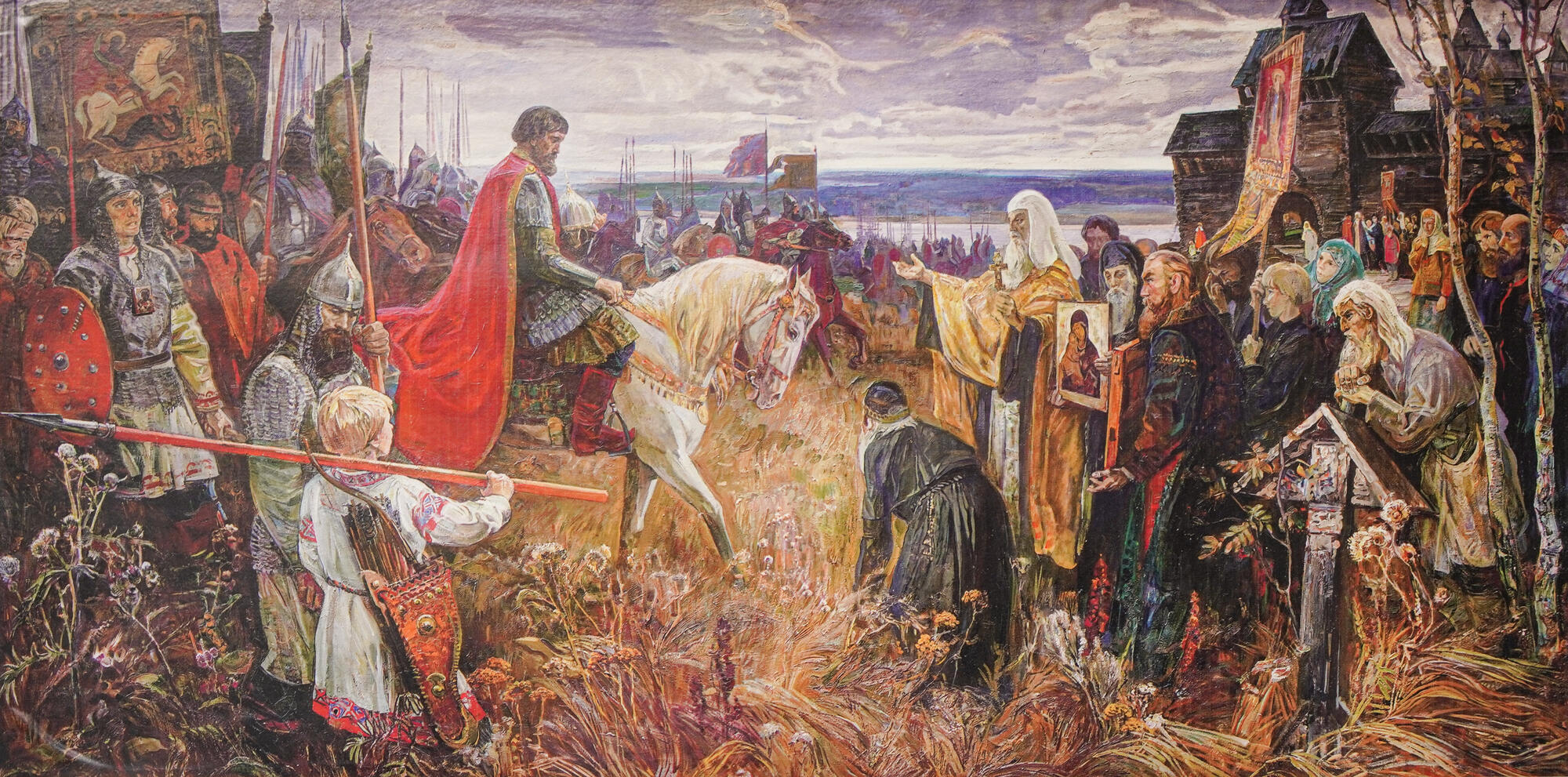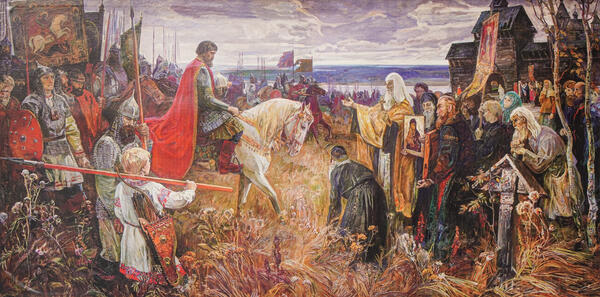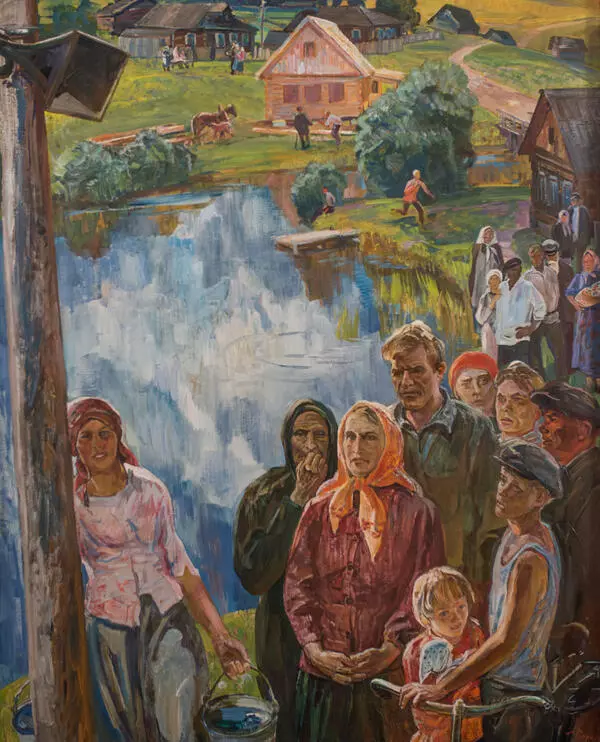The Honored Artist of Russia Gennady Sorogin (1930—2004) was born in the Urals. He graduated with honors from the Sverdlovsk Art School, and in 1956, from the Surikov Art Institute in Moscow. His paintings can be found in the State Tretyakov Gallery, the country’s art museums, and in private collections in Russia and abroad. Gennady Sorogin is rightly considered one of the brightest historical painters in Kolomna. The images of Dmitry Donskoy, Sergiy Radonezhsky, and the canvases revealing dramatic moments in Russian history brought him recognition and love of fellow countrymen.
The artist created a number of works dedicated to different parts of Russia, including the Urals, the artist’s second homeland. He painted a series of works dedicated to this region.
Gennady Sorogin loved and glorified the land of the Moscow suburbs, admired its beauty, and drew emotional energy and inspiration from it. He had a radiant and gentle personality, took an active part in public life, defended the architectural image of the ancient town, and kept the traditions of the Russian realist school alive.
A real memorial of Kolomna’s military and spiritual history is Gennady Sorogin’s painting “The Entry of Dmitry Donskoy into Kolomna”. A digital copy of this work is on display at the museum. Rich, active and dense colors fill the artwork with vivid content. Powerful and daring brushstrokes give a sense of those severe days of anxiety and confidence in the victory for the righteous cause. The painting appeals to patriotism and the sense of duty to the Motherland.
Kolomna was the site where the Russian troops gathered before the Battle of Kulikovo in 1380. The main forces of the Russian army marched from Moscow to Kolomna in three groups along three roads. The troops of Grand Prince Dmitry Donskoy, the regiments of his cousin Vladimir Andreevich of Serpukhov and the regiments of the junior princes of Belozersk, Yaroslavl and Rostov arrived separately, as well as the armies of the Suzdal and Smolensk principalities. In Kolomna the army was arranged in such a way as the Grand Prince intended it to be in the future field of battle. Dmitry led the big regiment, Vladimir Andreevich with the Yaroslavl army — the regiment of the right hand, Gleb of Bryansk was appointed commander of the left-hand regiment, the advanced regiment was made up of the Kolomna army, which was headed by the soldiers (about a thousand men) led by voevoda Mikula Vasilyevich. This concluded the inspection, and the army set off on the following day.
The artist created a number of works dedicated to different parts of Russia, including the Urals, the artist’s second homeland. He painted a series of works dedicated to this region.
Gennady Sorogin loved and glorified the land of the Moscow suburbs, admired its beauty, and drew emotional energy and inspiration from it. He had a radiant and gentle personality, took an active part in public life, defended the architectural image of the ancient town, and kept the traditions of the Russian realist school alive.
A real memorial of Kolomna’s military and spiritual history is Gennady Sorogin’s painting “The Entry of Dmitry Donskoy into Kolomna”. A digital copy of this work is on display at the museum. Rich, active and dense colors fill the artwork with vivid content. Powerful and daring brushstrokes give a sense of those severe days of anxiety and confidence in the victory for the righteous cause. The painting appeals to patriotism and the sense of duty to the Motherland.
Kolomna was the site where the Russian troops gathered before the Battle of Kulikovo in 1380. The main forces of the Russian army marched from Moscow to Kolomna in three groups along three roads. The troops of Grand Prince Dmitry Donskoy, the regiments of his cousin Vladimir Andreevich of Serpukhov and the regiments of the junior princes of Belozersk, Yaroslavl and Rostov arrived separately, as well as the armies of the Suzdal and Smolensk principalities. In Kolomna the army was arranged in such a way as the Grand Prince intended it to be in the future field of battle. Dmitry led the big regiment, Vladimir Andreevich with the Yaroslavl army — the regiment of the right hand, Gleb of Bryansk was appointed commander of the left-hand regiment, the advanced regiment was made up of the Kolomna army, which was headed by the soldiers (about a thousand men) led by voevoda Mikula Vasilyevich. This concluded the inspection, and the army set off on the following day.




